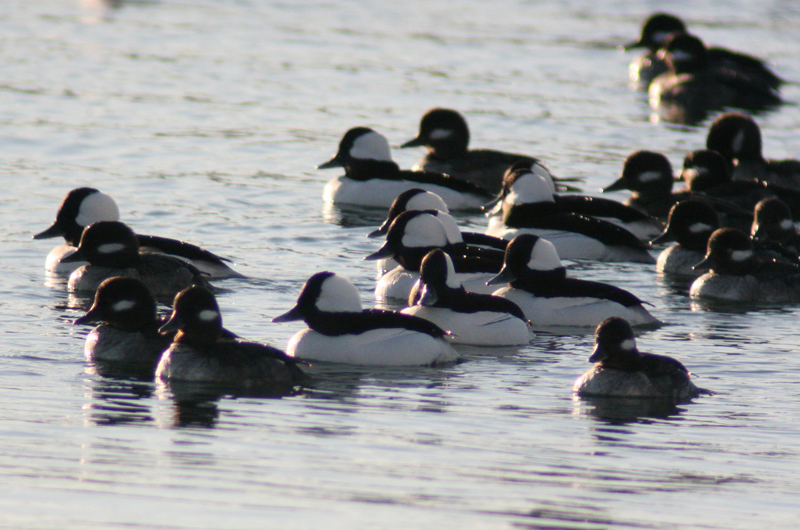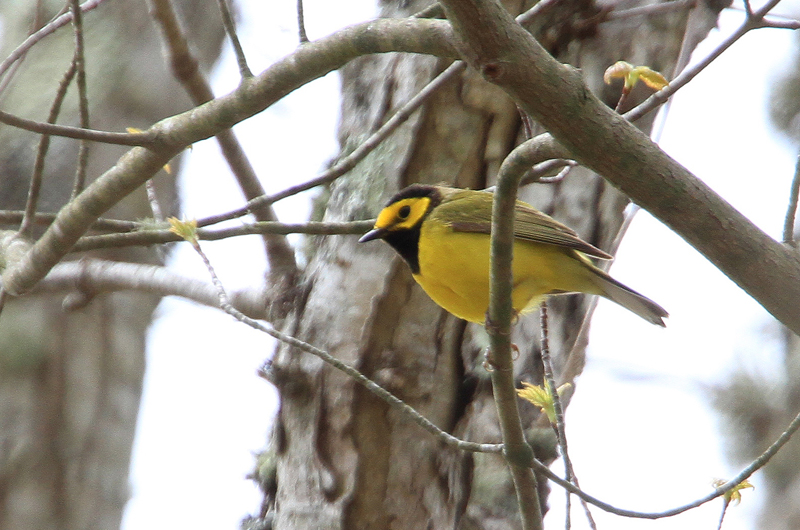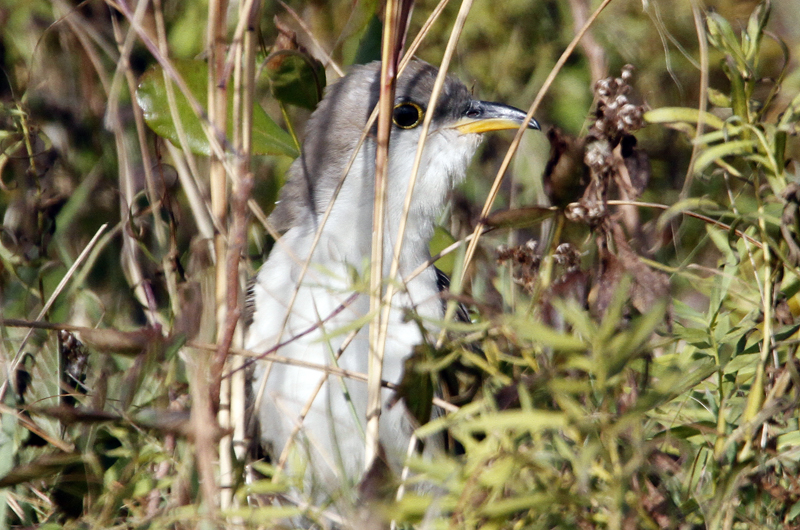Crows are supposedly year-round residents in all but the most northern parts of their range, but we have crows that migrate to Martha’s Vineyard for the winter, from late October to late March. Both American crows and fish crows are here now, but they can be very difficult to identify as both species are entirely black. There is a slight difference in size (the fish crow is slightly smaller) but this size difference is difficult to see unless the two species are side-by-side. Fortunately, their calls are different. We all know the deep caw of the American crow, but the fish crow’s call is a nasal cah-cah. The latter species also has faster wingbeats, as if they have a more difficult time flying.
The winter resident fish crows, a smaller cousin of our abundant American crows, have been in the news for a few weeks now, and they can reliably be found in two locations. I found a flock of about 300 of them on the evening of Nov. 1 as they were flying from Vineyard Haven Harbor toward Hine’s Point, and another flock of about 50 of them in Oak Bluffs on Harthaven Beach near Farm Pond. In past years we have had around 1,000 of them scattered in several flocks, so please let me know if you see them in other areas. Where they are the rest of the year is a mystery since range maps of these small crows show them to be year-round residents throughout their range.
On Nov. 4, Kenny Ivory and I went searching for the commuter crows that roost on the Island but commute daily to forage on the Cape and maybe elsewhere in southeastern Massachusetts. The daily pattern of these commuter crows was first reported in 1918, so this has been going on for 100 years. Our vantage point was at the entrance to Lake Tashmoo, which is where they made landfall in recent winters. We counted about 300 of them arriving west of Tashmoo, somewhere near Makonikey, then proceeding onward toward their usual roost site near the Lambert’s Cove Inn. While most of them seemed to be American crows, they were too far away to identify to species. Are these American crows from central Canada, where we know that the northernmost of the breeding crows are migratory? These commuter crows also have included some fish crows in recent years. Scott Stephens observed about 50 fish crows early in the morning of Nov. 1 that were flying northeast toward Lake Tashmoo and perhaps back to the mainland for the day.
Bird Sightings
Some extraordinary songbirds have been sighted recently. Laurie Walker carefully observed a yellow warbler at her house in Chilmark on Nov. 5, and she had two northern parulas back on Oct. 25. Myron Garfinkle reports a hooded warbler was hanging around his porch and bird bath for most of the afternoon of Nov. 2. Allan Keith found a summer tanager at Squibnocket on Nov. 1. And Diane and Chris Abbot had a yellow-billed cuckoo visiting their house in Chilmark on Oct. 31. So what are these birds doing here? By all accounts they should be well south of here. However, we have had two tropical rainstorms rushing up the Atlantic Coast in recent weeks, storms which likely carried these birds back northward so they now need to repeat their southward migration.
More seasonable sightings include Margarita Kelly’s two yellow-bellied sapsuckers in her Oak Bluffs yard on Nov. 5, along with the more expected tufted titmice and a Carolina wren. Gus Ben David reports that bluebirds showed up in his yard on Nov. 5 — his first in a year or so — and that his chipping sparrows arrived on Nov. 1. Recently, he also counted 11 turkey vultures on the ground in his yard.
Marsh wrens are never very abundant on the Vineyard, perhaps because they prefer cattails and other dense marsh vegetation, a type of vegetation that is not very common on the Island. Lanny McDowell found one at Squibnocket on Nov. 1, our only record for this species this fall.
The waterfowl (ducks, geese, and swans) that spend the winter here are becoming more common. Lisa Maxfield reports that American wigeon and buffleheads showed up on Brush Pond in Oak Bluffs on Nov. 6, while hooded mergansers appeared the day before. Jeff Bernier found a ruddy duck at the Sheriff’s Meadow Sanctuary in Edgartown on Nov. 5. Kenny Ivory and I spotted 100 bufflehead in Lake Tashmoo on Nov. 4, and I spotted a flock of 100 red-breasted mergansers on Sengekontacket Pond on Nov. 3 (along with 10 laughing gulls and one Bonaparte’s gull). Four species of seaducks (common eider, white-winged scoter, black scoter and surf scoter) are becoming more common and flocks of them are present at many locations around the Island.
Other species of waterbirds other than waterfowl are also arriving. The trio of Anne Lemenager, Helen Green, Connie Campbell spotted an American coot swimming in the pond near the 17th green at Farm Neck on Nov. 5. And Jeff Bernier found a coot and a pied-billed grebe on the pond at the Sheriff’s Meadow Sanctuary in Edgartown that same day.
Charlie Kernick’s ruby-throated hummingbird is still in his yard on Nov. 6. The hummer, a male, has been there for 23 days and now, and as this column is published it is experiencing near-freezing and freezing temperatures for the first time this fall.
The weather is finally starting to get cooler but plenty of migrantscan still be found; please keep us up-to-date by reporting your sightings to birds@mvgazette.com.
Robert Culbert is an ecological consultant living in Vineyard Haven.










Comments
Comment policy »